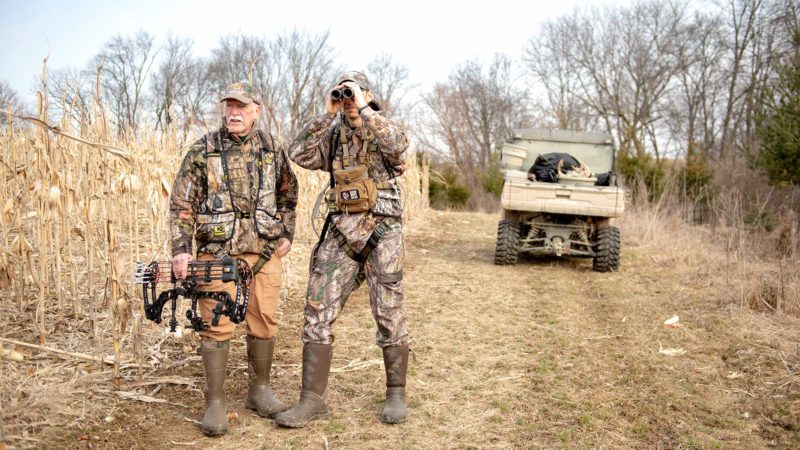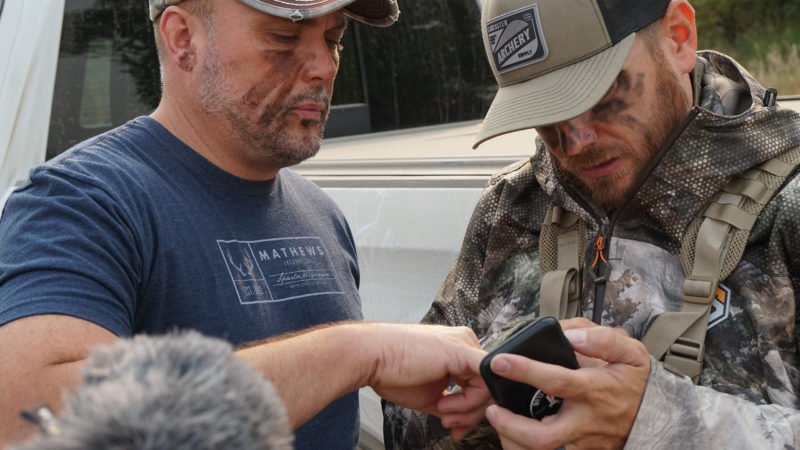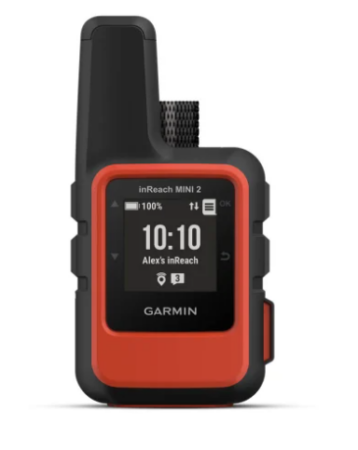Hunting has been a passion of mine for many years, and bowhunting with my dad has produced more fond memories than I could possibly count. Those fond memories and the pure enjoyment of hunting can often cause us to overlook the dangers that are associated with the sport.
The afternoon of October 15, 2016 was a rude awakening for both my dad and I, and I hope that this story may help others to be better prepared the next time you head to the woods.
The day started just like most other weekends that occur during deer season. My dad and I arrived at our hunting property and started to discuss the game plan for the afternoon while we set up camp to stay the night.
After determining which stands we would both hunt, my dad decided that he would take our side-by-side part of the way to his stand and walk the rest of the way. It was nearly a half mile hike up and down several ridges to get there.

My dad geared up and headed out while I decided to stick around camp a little longer because my stand was a much shorter hike. After getting ready, with bow in hand, I headed out about 20-30 minutes after my dad.
I had only made it a short distance from my truck when I realized that I had left my cell phone in my truck on the charger. I almost decided to keep going, but decided to turn back and get it.
Both my dad and I are adamant about two things, safety harnesses and cell phones. We both know the importance of each, and try to make sure we always have them when we go out hunting. Upon arriving at my truck, I saw that I had multiple missed calls and a voicemail from my dad.
I will never forget that message, and still have it saved to this day. My dad’s voicemail said in a very shaky voice, “Hey, I managed to turn this thing over on top of me, and I need you to come give me a hand.” This may sound like no big deal, but if you knew my dad, you would know that the tone of his voice was about as excited, nervous and scared as he has ever been.
Needless to say, I dropped my bow and pack, and took off in his direction. When I found my dad. He had managed to unpin himself from underneath the side-by-side and was on the ground with his back up against a tree. The side-by-side was on its side with the majority of its contents spilled out onto the ground from it rolling over.

My dad complained of pain in his leg and hip area and stated that he could not stand or walk. Fortunately, I have a calm demeanor and was able to assess and prioritize the situation. Knowing that my dad’s injuries were serious, but not knowing the true extent of his injuries, I knew that I needed to get him to a hospital. My best option was to try and get the side-by-side back onto its wheels and see if it would run. If I could do that, I would be able to get my dad loaded up and back to the truck.
My only other option besides calling for help would be to carry him the quarter mile up and down ridges, and neither of us were fans of that option. Thankfully, I was able to use the winch on the side-by-side to get it flipped back over, and it started up right away. After accomplishing that step of the process, I was able to pick my dad up and get him loaded into the passenger seat.
Although extremely uncomfortable, and in a lot of pain, I was able to get him back to camp, transferred into the truck, and taken to a nearby hospital. A broken pelvis and a long recovery ended up being the reality of a situation that could have turned out to be much worse.
This event really drove home the importance of being safe while hunting. If we stop and think about it, hunting is an inherently dangerous activity. We often find ourselves out in remote, hard-to-access locations, sometimes under less-than-ideal conditions, and hunting from elevated treestands that can potentially fail.
Equipment failure is just one aspect of the dangers involved, but the human error aspect is probably the most dangerous part. Even though there is plenty of risk involved with hunting, those risks can be minimized by taking just a few precautionary measures. Keep the steps mentioned below in mind so that you can ensure you enjoy your hunt and still get back home to your loved ones.
1. Hunt in Pairs
If possible, having a hunting partner that is nearby and one that is familiar with the area could potentially save your life. In the case of my dad, had he been alone, there is no telling how long he would have been out in the woods injured. Living well over an hour away from my property, even a phone call might not have been much help.
Hunting with a buddy isn’t just for the old guys. Hunting with a friend or family member can be a lifesaver when things go south. It can also save you big time when it comes to hauling meat out of the woods. When and where you can, make a point to hunt with someone else.

2. Let Someone Know Where You're Hunting
If you are hunting alone, always let someone know where you will be, specifically what stand or blind. If you get hurt, knowing the general area you had planned on hunting could drastically reduce the time it takes to find you.
When you inform someone of where you plan to hunt, it’s also a good idea for you to let them know when to expect you back. Even better, keep a notebook or log book at the house for your family. This notebook should have all the basic info of the farm or public land you’re hunting. Address, which gate, stand sites, trails, roads, landowner contact numbers, and more should be kept in this book.
Make notes of where you’re headed and when you plan to return. This simple move could save your life if you find yourself in an emergency.
3. Carry a Cell Phone
We all probably assume that everyone has a cell phone these days, but many of us have a habit of leaving them in our trucks, or back at camp. Even if you hunt in an area of poor reception, a cell phone might be a good Plan-B if one of the other precautions happen to fail.
Make a point to keep your phone where you can grab it at any point. Far too many hunters find themselves in an emergency situation each year only to realize their phone was stashed in their pack, just out of reach.
If/when you find yourself on the ground and unable to move, you need to have your phone within easy reach in a shirt or pant pocket.

4. Use a Hunting App
Hunting apps like HuntStand and onX Hunt allow you to share your location with people of your choice. Although a little concerning for some to have their location constantly tracked, this is an easy way to ensure someone knows your whereabouts while hunting.
This is a very simple precaution to take. Once installed and setup, it’s really a set it and forget it method. As long as you have your phone with you, whoever you have granted permission will know where you are.

5. Use a Garmin inReach
Smart phones and hunting apps are great, until your phone dies. Then what? You can always count on your phone to die at the worst possible time. So what’s your Plan B?
The Garmin inReach is an incredible tool that’ll save your life when you find yourself at rock bottom in the backcountry, or in an emergency in the deer woods. It’s a satellite-based device, so it works when and where your phone won’t.
The SOS option saves lives every hunting season. And the ability to text friends and family for updates and hunt reports is priceless. This is a tool every hunter should keep close by during the months of hunting season.

6. ATV Safety
What kind of safety article would this be if I didn’t mention ATV and side-by-side safety after the story I shared? With as popular as equipment like ATV’s and side-by-sides are for hunting, we need to remember that even though they can make things easier on us, they also increase the risk of injury.
Sadly, we’ve lost a number of friends and hunting industry leaders over the years due to ATV accidents. A few simple safety steps could have made all the difference.
Simple safety equipment like helmets, gloves and seat belts (if equipped), can reduce the risk of injury. Do yourself and your loved ones a favor and put that helmet on and buckle that seatbelt.

Closing
Hunting is an activity that I have been fortunate enough to enjoy for the majority of my life, but it’s not without its risks. A few precautionary measures taken before we head out to the woods can go a long way.
Of course, always wear those safety harnesses and lifelines.
Having an emergency plan, and the tools to see it through, will help ensure we’re able to come home safely to our loved ones and continue enjoying the activities we are so passionate about.

 By
By 



